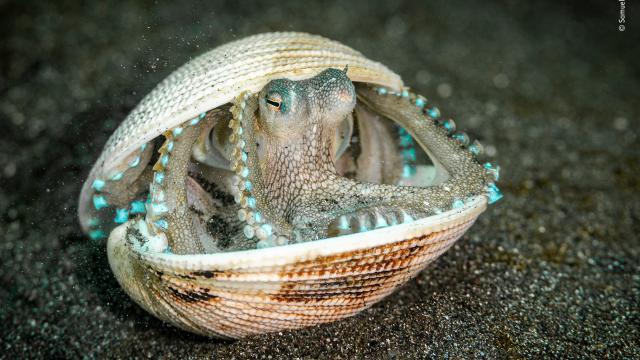This week, the National History Museum in London is previewing its latest collection of the most dazzling and sobering wildlife photos submitted over the past year.
For nearly six decades, the UK has played host to the Wildlife Photographer of the Year contest, a prestigious competition of wildlife photographers and their work. Though originally run by the BBC Wildlife Magazine, the Natural History Museum took over managing and producing duties for the contest in the mid-1980s, which it has maintained ever since. The contest has also become an international showcase, with entries from photographers across 93 countries sent in for 2022.
“This year’s photographs range from shocking to awe-inspiringly beautiful. Both types of image emotionally connect us with the natural world and encourage us to think about the impacts humans are having on species and ecosystems. We hope these images will help us create advocates for the planet, spurring people into taking action locally and globally to save Earth,” Natalie Cooper, senior researcher at the Natural History Museum and jury member, told Gizmodo.
On October 11, the winning images — which include the winners of the Grand Title Award and Young Grand Title Award — will be revealed by the Natural History Museum. Three days later, it will debut its newly redesigned exhibition featuring a selection of 100 images, which will eventually be sent on a travelling tour across the UK and the world. But as a sneak preview for now, the Museum is releasing 14 highly commended photos, which were nominated across various categories. So here they are.
“Polar Frame”
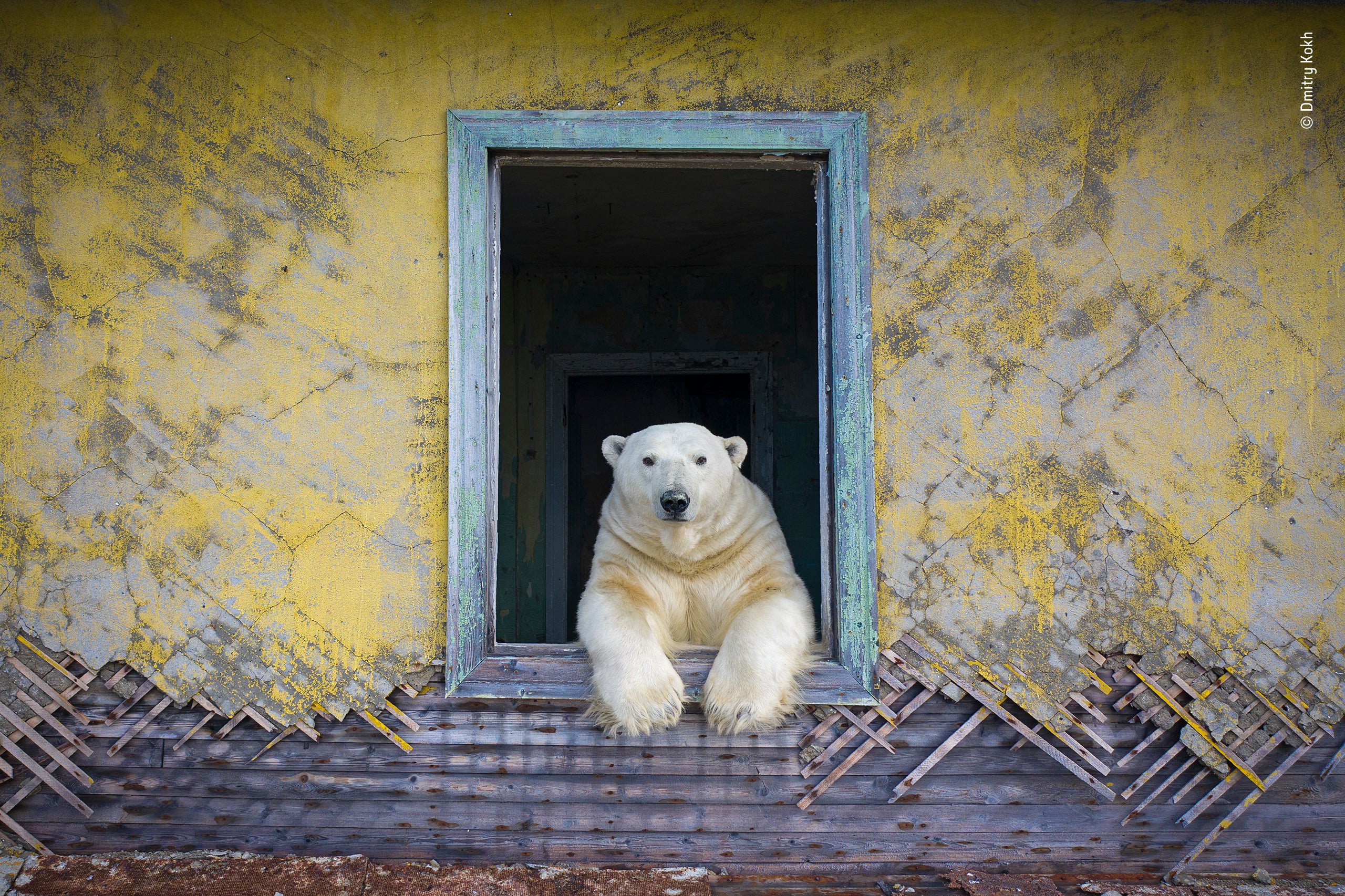
While on a boat trip near the small island of Kolyuchin in the Russian High Artic, photographer Dmitry Kokh was surprised to see movement in one of the houses left behind when humans abandoned the island in the early 1990s. His binoculars then confirmed the presence of a polar bear population that were exploring the town, twenty in total.
One of the highly commended selections for the “Animal Portraits” category, Kokh recorded his chance sighting with the help of a low-noise drone.
“Treefrog Pool Party”
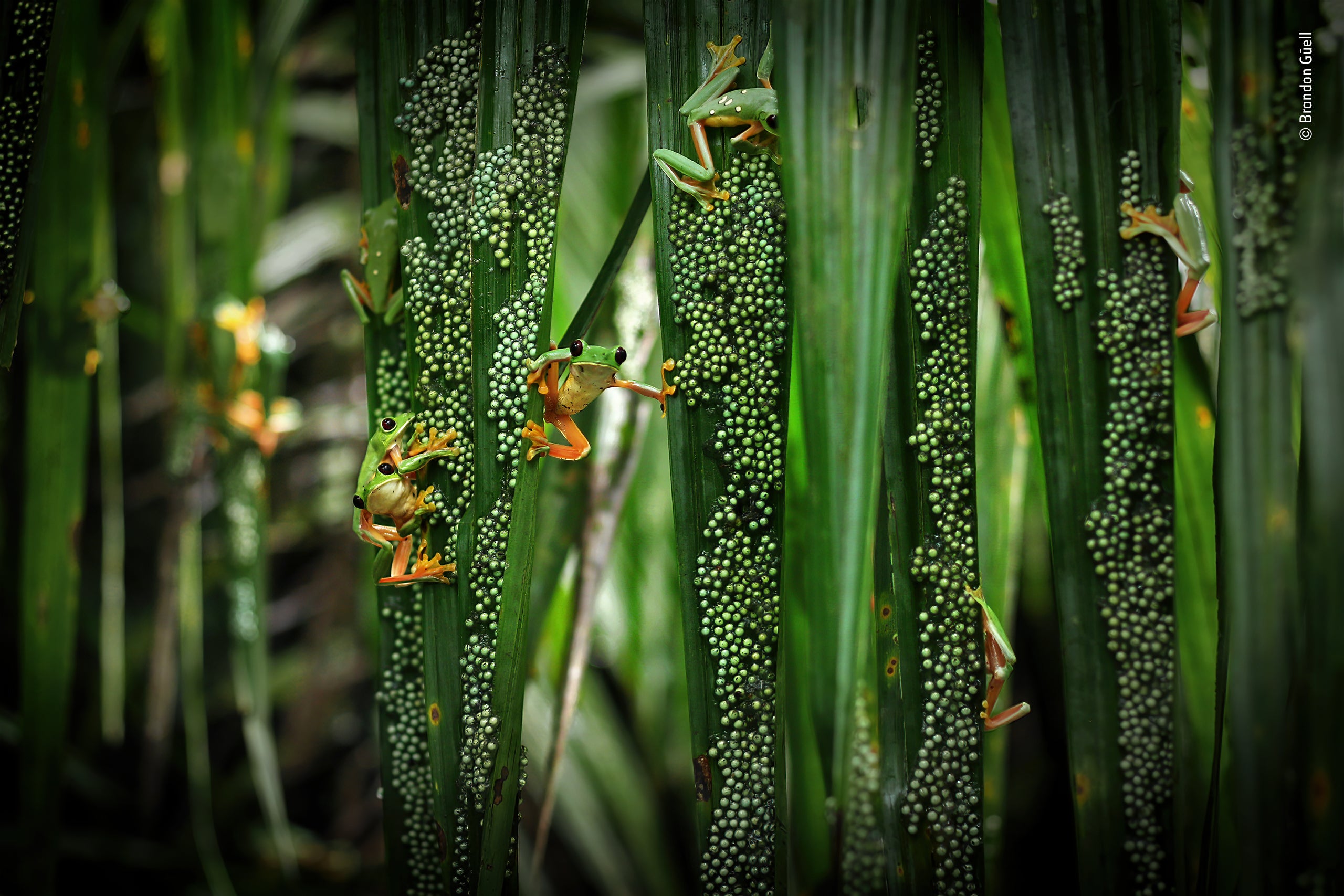
Taken by Brandon Güell in the forests of Costa Rica, this image shows a large crowd of male gliding treefrogs calling out for females to breed with. These large-scale breeding events only occur a few times in the year and only in certain isolated locations. After the females arrive at dawn to mate with their eligible bachelors, they’ll lay up to 200 eggs each, creating giant masses of life that will eventually fall into the water as tadpoles and continue development.
This is a highly commended selection in the “Behaviour: Amphibians and Reptiles” category.
“The Octopus Case”
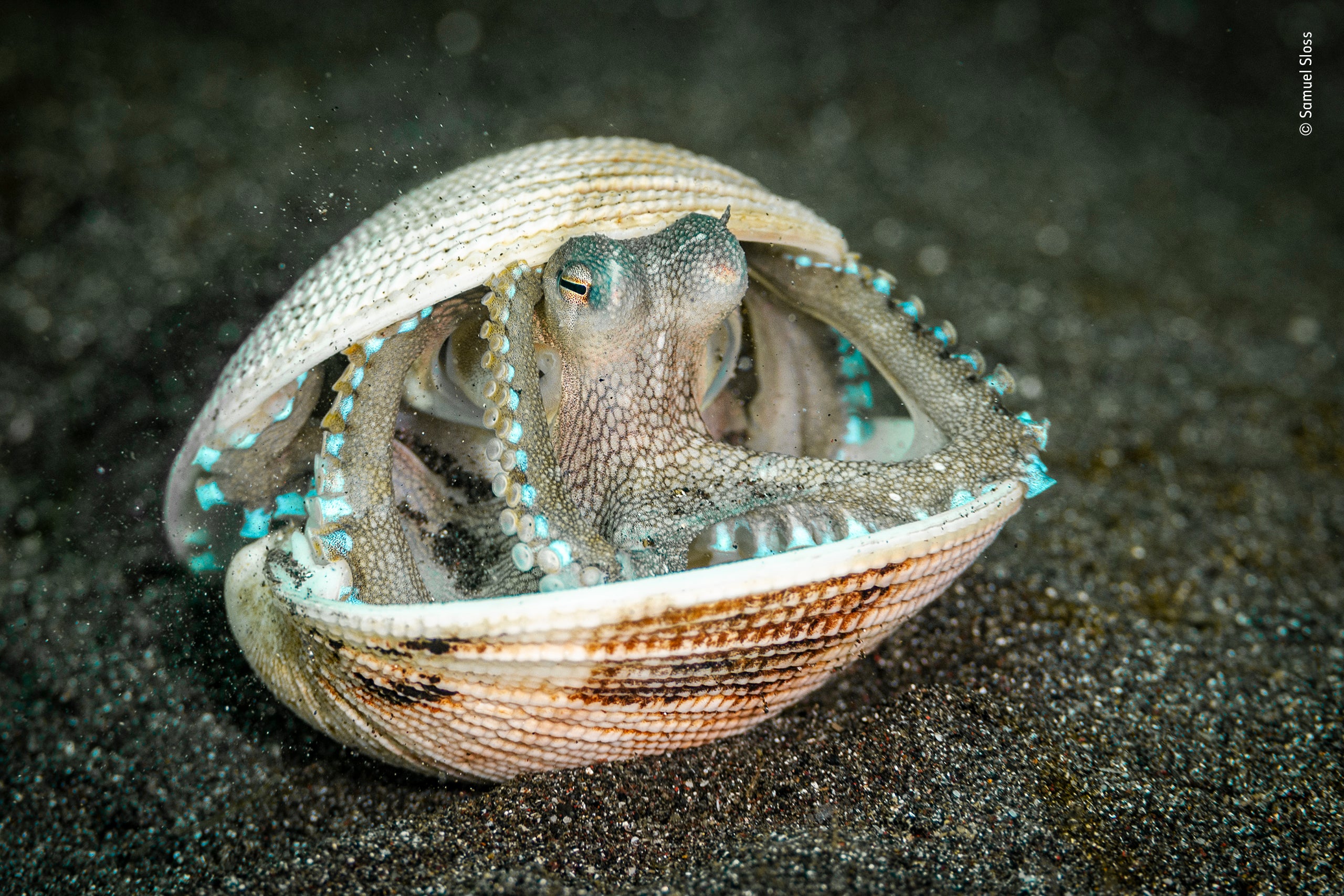
This game of peek-a-boo was captured by Samuel Sloss and is a highly commended selection in the “15-17 Years” category. Sloss had been muck-diving in the waters of the Lembeh Strait off Indonesia, when he came across a coconut octopus. After some initial hesitance, the octopus opened its shell, which allowed Sloss to take this amazing photo. These octopuses will use everything from clam shells to coconuts to construct their makeshift barriers, which are thought to use for shelter. They’re also notable for being one of two octopus species that will regularly walk bipedally.
“Just One Day’s Catch”

Srikanth Mannepuri was compelled to take this photo via aerial drone in Kakinada, India after being shocked by the amount of recently caught marlin and sailfish in a single area. These fish are important predators vital to a thriving marine environment, but they’re far from the only species being threatened by overfishing.
The image is a highly commended selection in the “Oceans: The Bigger Picture” category.
“The Disappearing Giraffe”
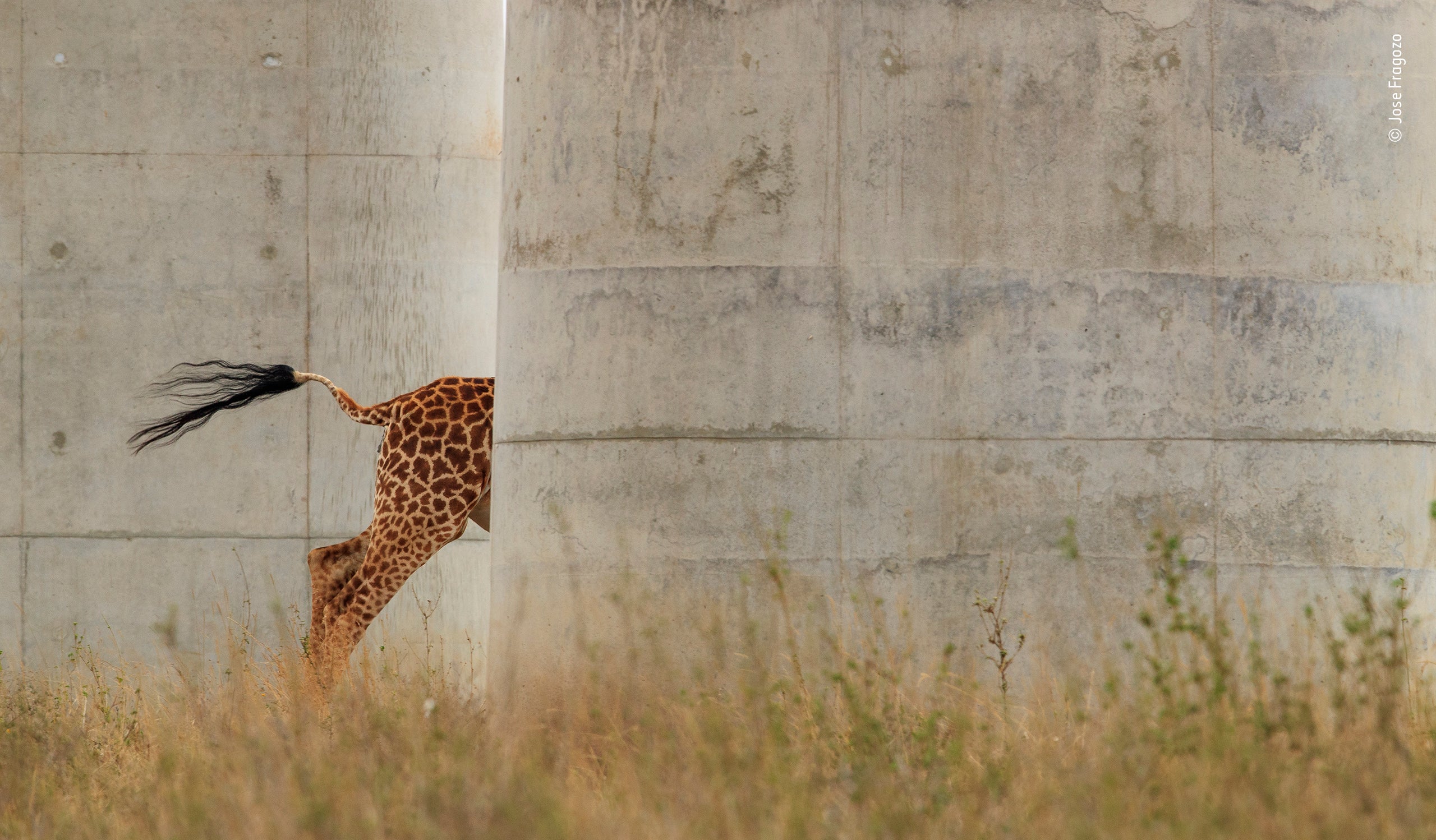
Photographer Jose Fragozo took this image while in a moving vehicle travelling through the Nairobi National Park in Kenya. The obstruction is one of the pillars of the country’s new Standard Gauge Railway. The railway was lifted high above in this area specifically to reduce the effect it would have on the surrounding wildlife. But Fragozo still considers the photo a reminder that human activity is increasingly encroaching on wildlife, something that usually tends to fare badly for the latter.
This image is a highly commended selection for the “Natural Artistry” category.
“Underwater Wonderland”
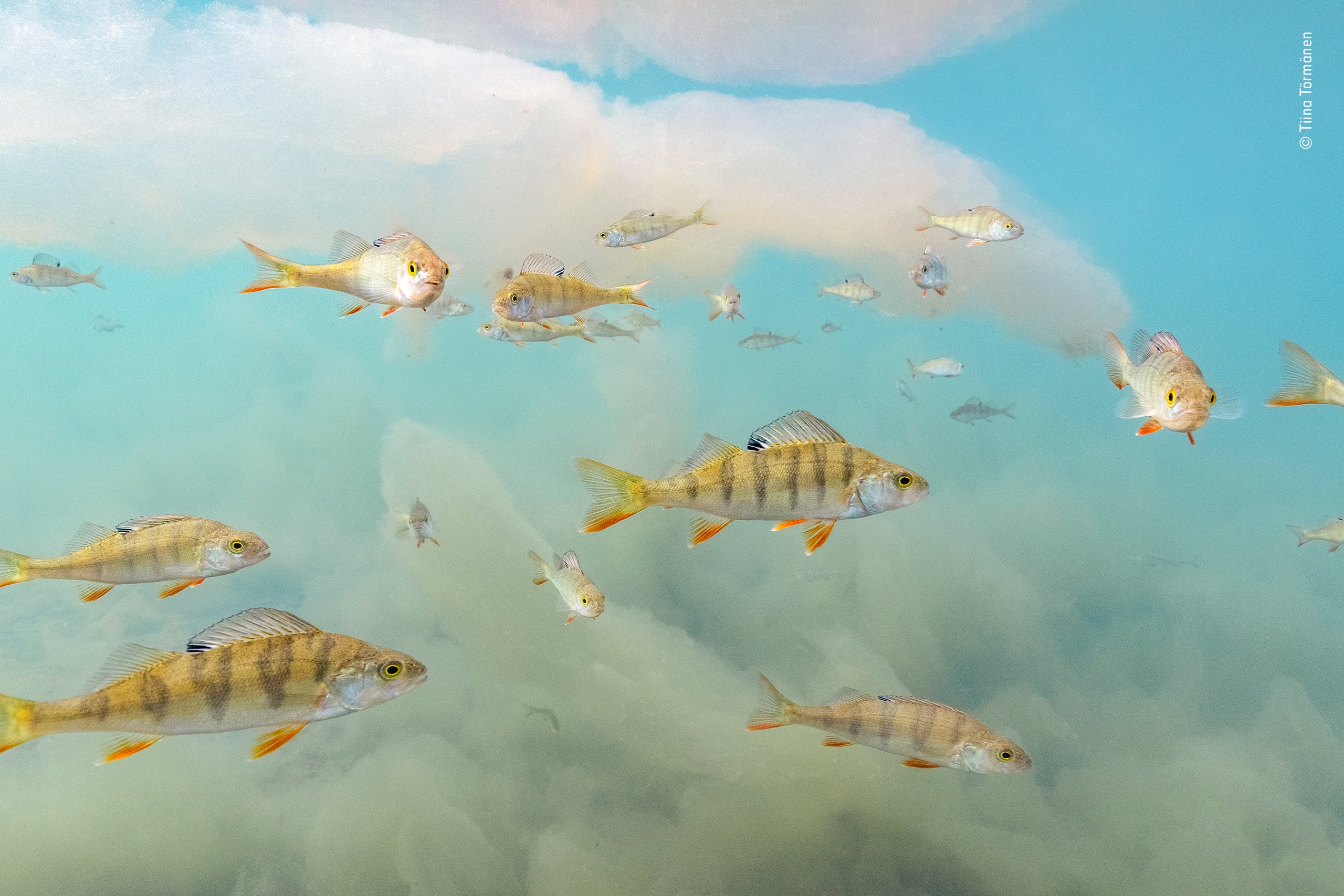
This image was taken by Tiina Törmänen during her annual lake snorkel in Posio, Finland. The school of European perch in the photo are swimming through a cloud of pinkish-coloured algae. These algae make for a beautiful background, but many lakes and other bodies of water have been experiencing an increase in large algal blooms in recent years, which are incredibly harmful to the surrounding wildlife, as well as humans and their pets. On the positive side, Törmänen had only seen dead fish on her previous trips, perhaps indicating that these fish have found a way to survive under these tricky conditions.
This image is a highly commended selection in the “Under Water” category.
“Sloth Dilemma”
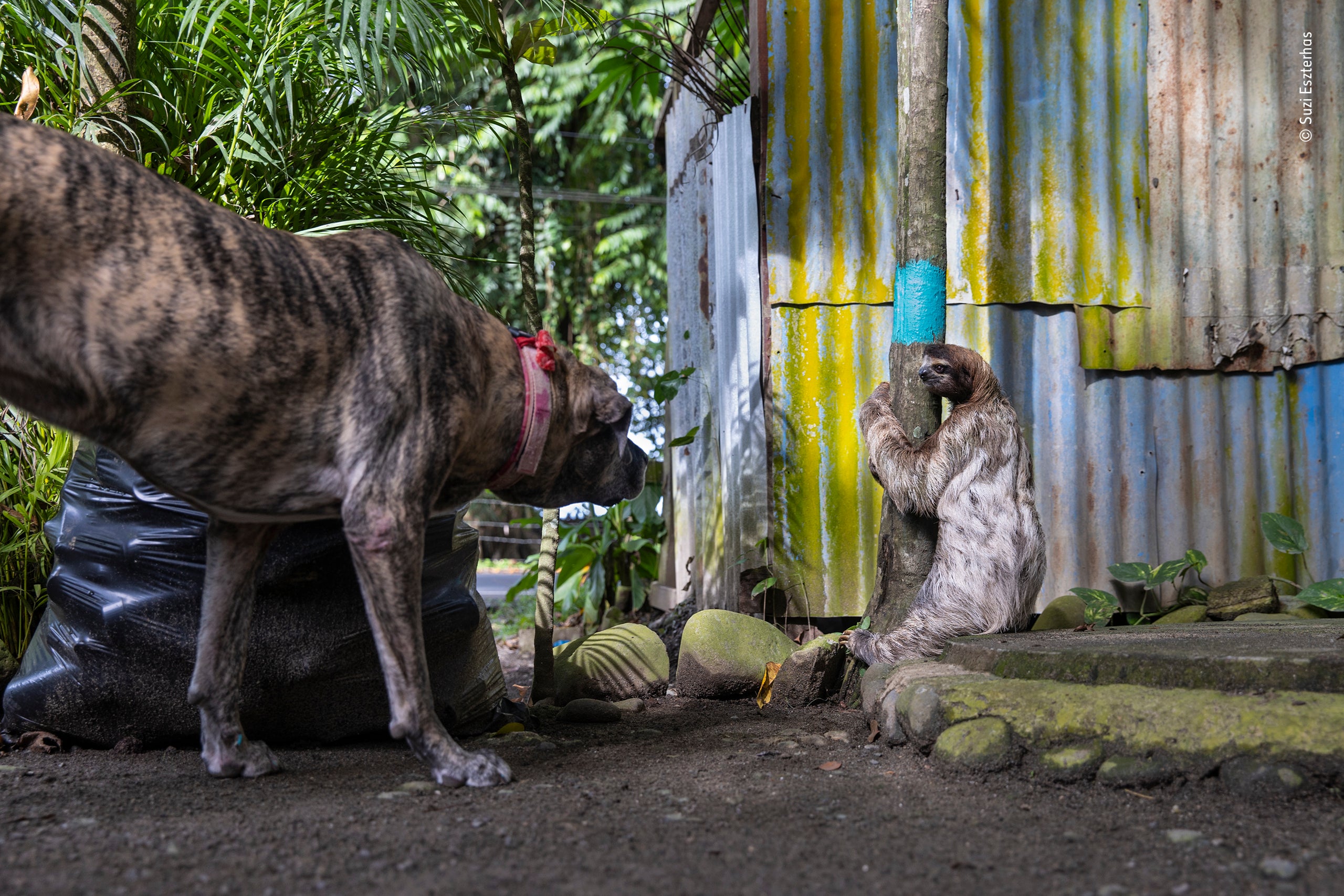
Suzi Eszterhas documented this awkward meeting between a brown-throated sloth and a dog in Costa Rica. Though the sloth may have been scared, they likely had nothing to worry about, as the dog was part of a sloth-safety training program run by the Sloth Conservation Foundation and simply sniffed it. Sadly, sloths in Costa Rice and elsewhere are facing serious threats to their population due to habitat loss.
This image is a highly commended selection in the “Urban Wildlife” category.
“Wanted!”
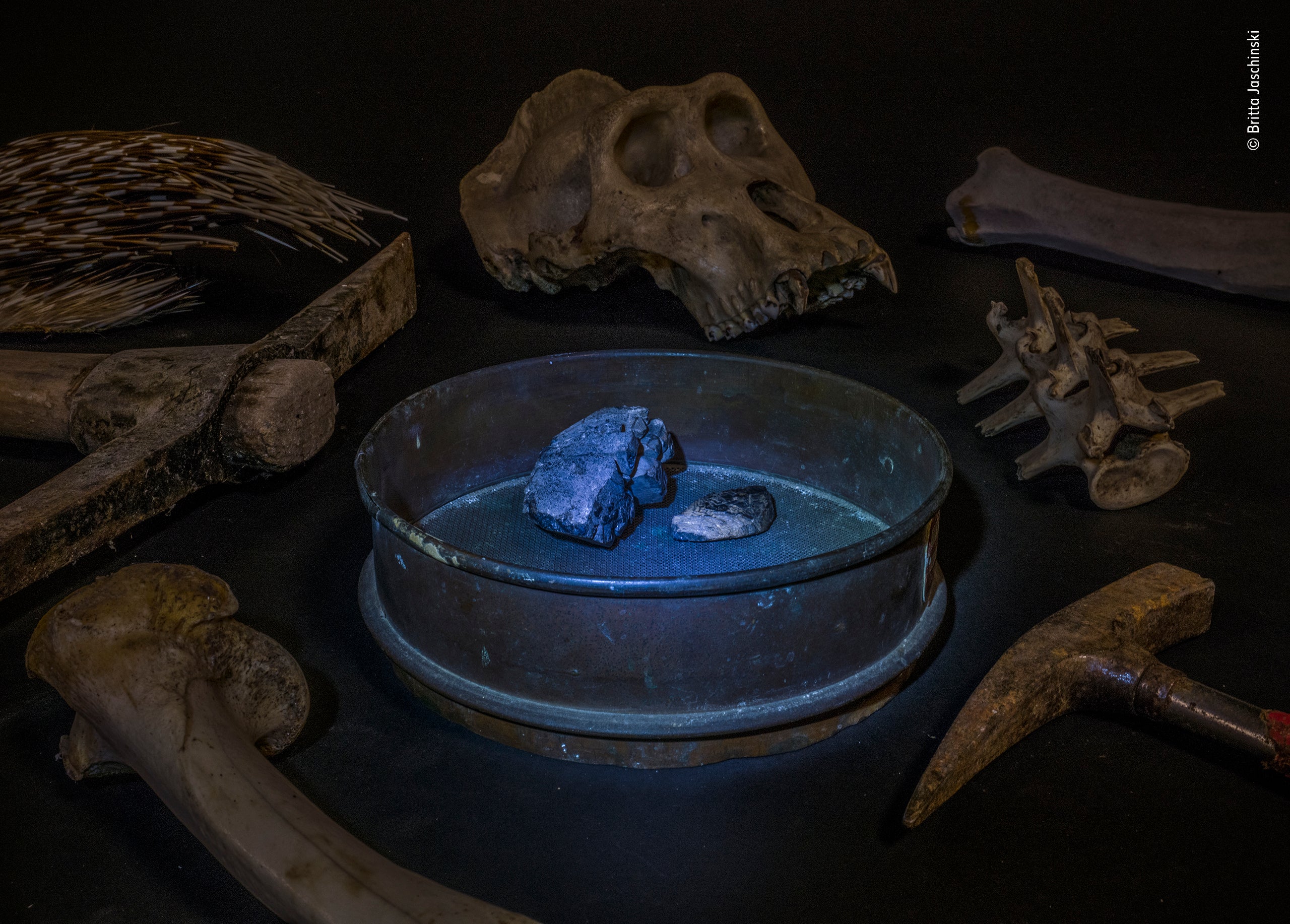
This photo by Britta Jaschinski shows the blue-tinged ore coltan illuminated by torchlight and surrounded by animal bones and mining tools. The minerals found in coltan are an essential component of many electronics, but the bones, which include a gorilla skull, highlight the hidden costs of the industry. In areas where coltan mining is pervasive, such as the Democratic Republic of Congo. exploited miners who are paid little will turn to hunting to survive. This hunting can then further threaten the already scarce populations of gorillas and other animals in the area. Increased animal-to-human contact also raises the risk of encountering emerging infectious diseases that can spill over into the greater human population and cause mass illness.
This image is a highly commended selection in the “Photojournalism” category.
“Dipper Dispute”
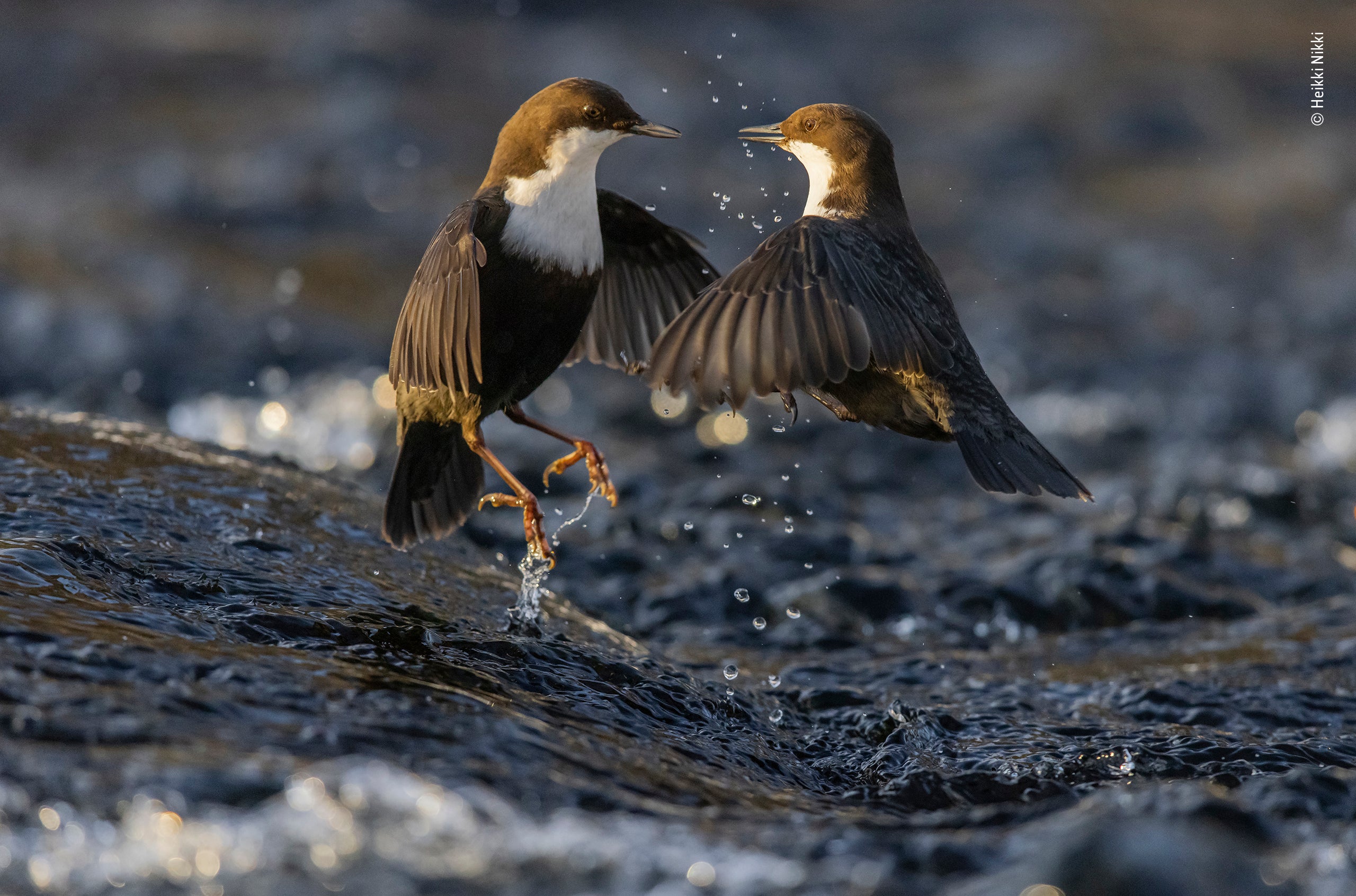
Heikki Nikki was fortunate enough to capture this image of two white-throated dippers jockeying for a prime “dipping” rock along a river in Kuusamo, Finland. The birds use the rocks to look for their next meal, usually mayflies, insect larva, or small fish, then dive down into and under the water to catch their prey.
This image is a highly commended selection in the “Behaviour: Birds” category.
“Life and Death in Fur Farming”
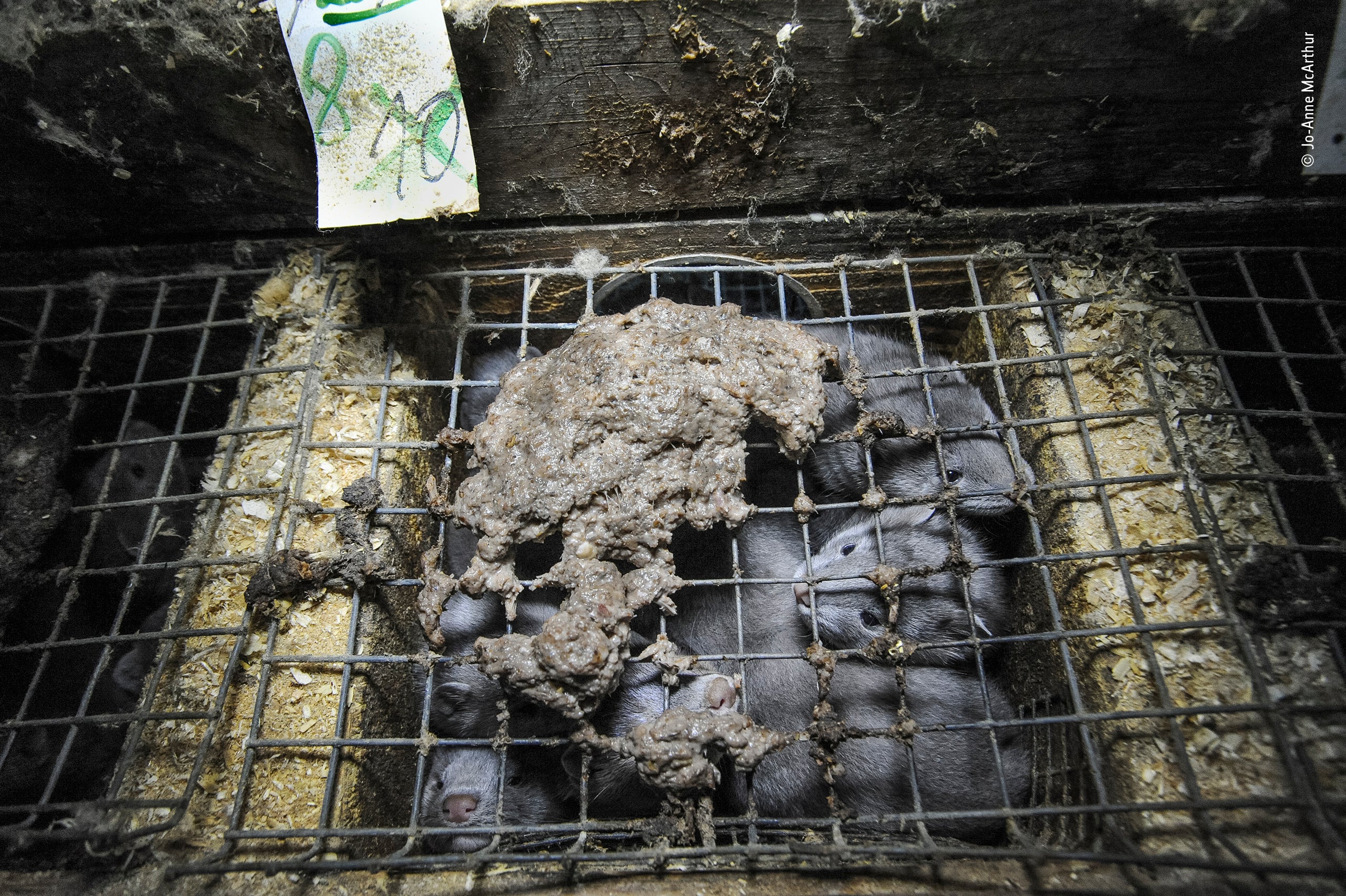
Journalist Jo-Anne McArthur took this harrowing image of American mink kits struggling for space inside a cage at a Swedish mink farm; the sign above in Swedish indicates that two minks have recently died.
There have been modest legislative changes to mink farming in the country since this photo was taken, such as mandated slightly larger cages. During the covid-19 pandemic, the emergence of the coronavirus among farmed minks also led to the shutdown of the mink industry and the mass culling of millions of minks in countries like Denmark and Sweden. But this year, Sweden allowed some farms to reopen for business and Denmark may decide to follow suit as well, raising the possibility that these sorts of conditions will once again return.
This image is a highly commended selection in the “Photojournalism” category.
“The Lost Floods”
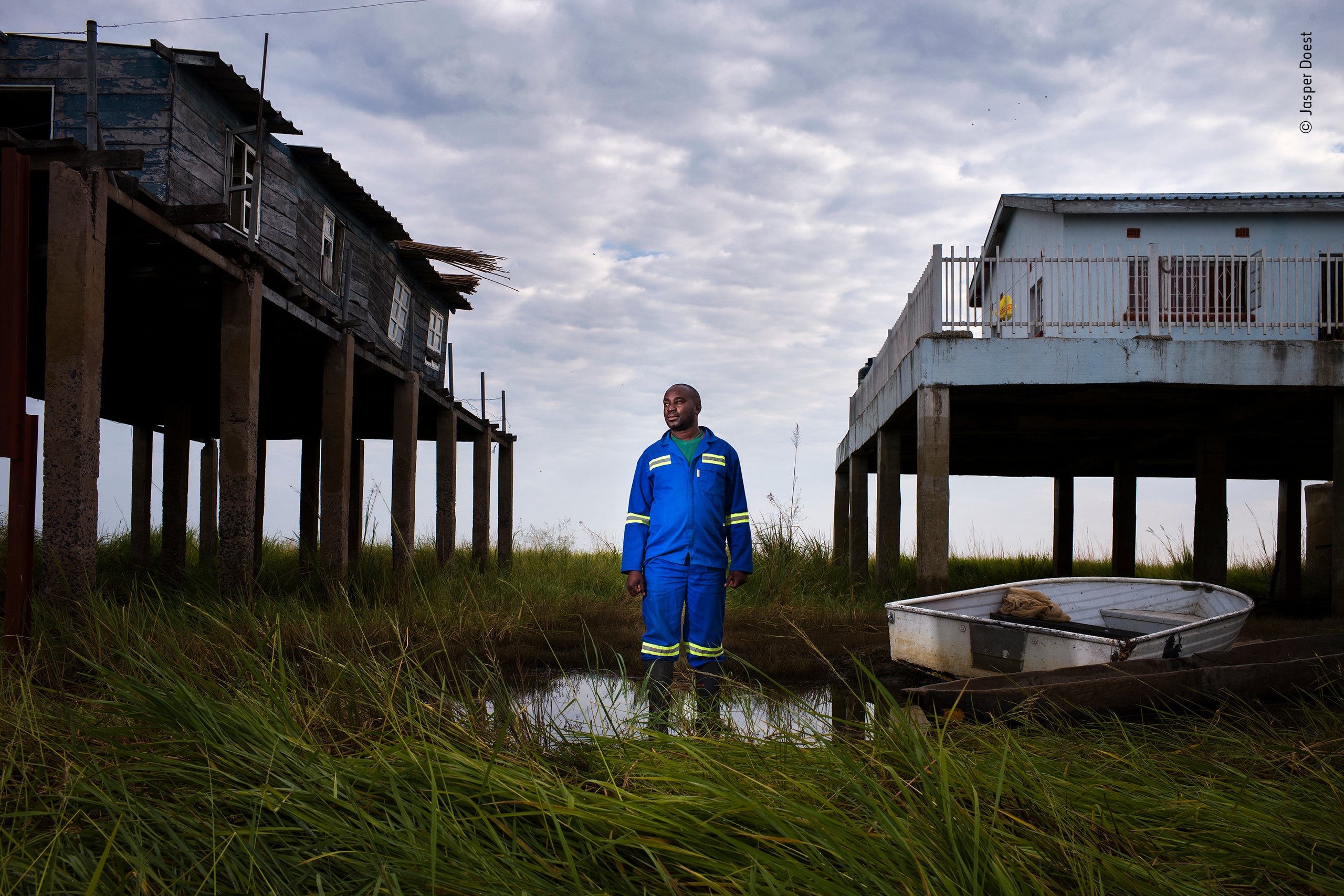
Jasper Doest took this photo of Lubinda Lubind, a station manager for the Zambezi River Authority, next to his house in the Barotse Floodplain of Zambia, Africa. Droughts in the area and in many parts of the world have become increasingly common, thanks in part to climate change and other human-caused activity, such as deforestation. As the once-routine ebb and flow of periodic floods becomes more disrupted, both wildlife and the humans that depend on it will suffer as a result.
This image is a highly commended selection for the “Wetlands: The Bigger Picture” category.
“The Snow Stag”
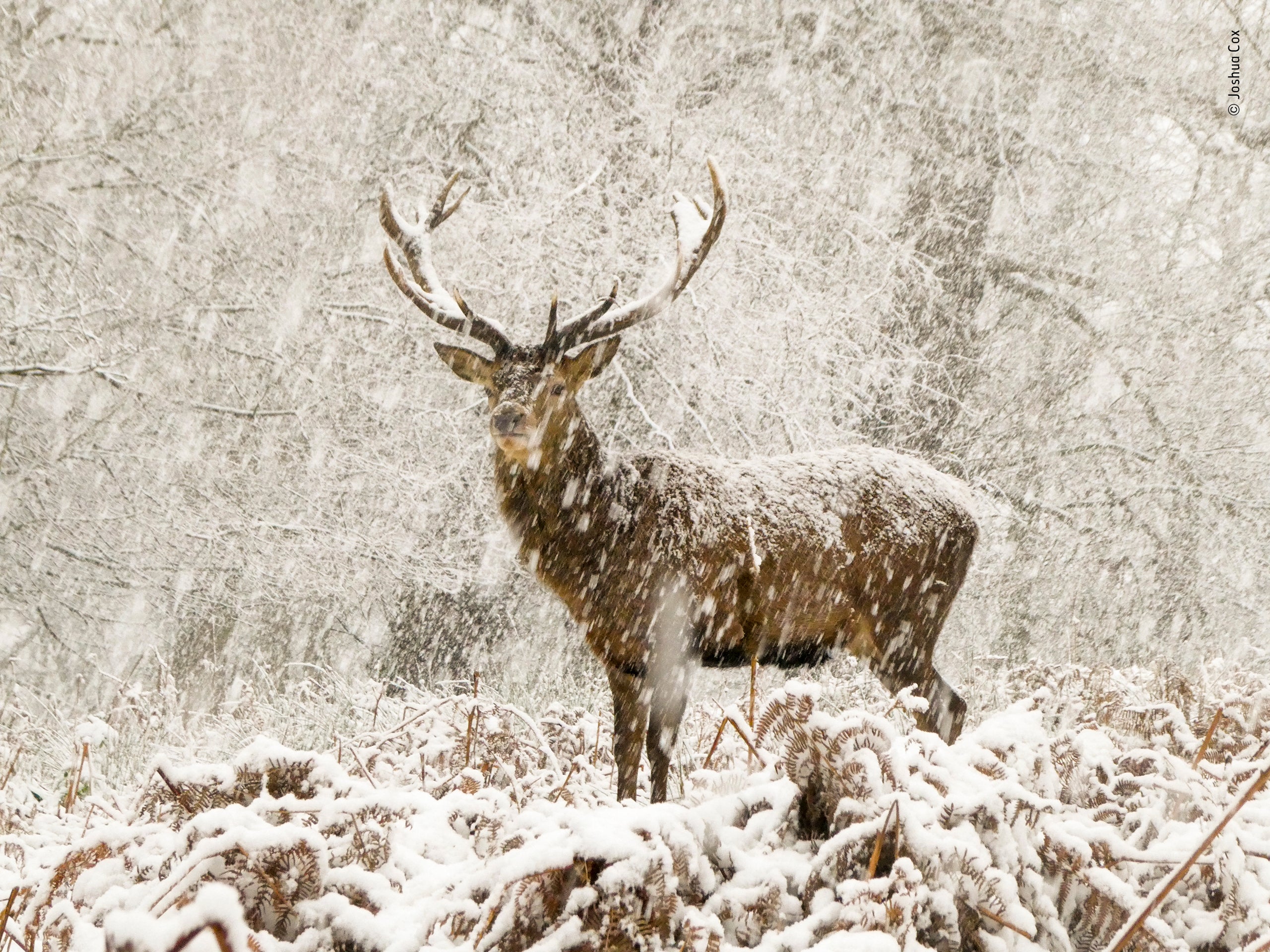
This cinematic photo was taken by youngster Joshua Cox while on a trip with his father to Richmond Park in London, UK. Cox had been following the deer from afar when the snow suddenly intensified and one of the stags decided to stop and look back. Red and fallow deer have roamed free in the park since the 1600s, grazing upon the abundant vegetation in the area.
This image is a highly commended selection in the “10 Years and Under” category.
“Burrow Mates”
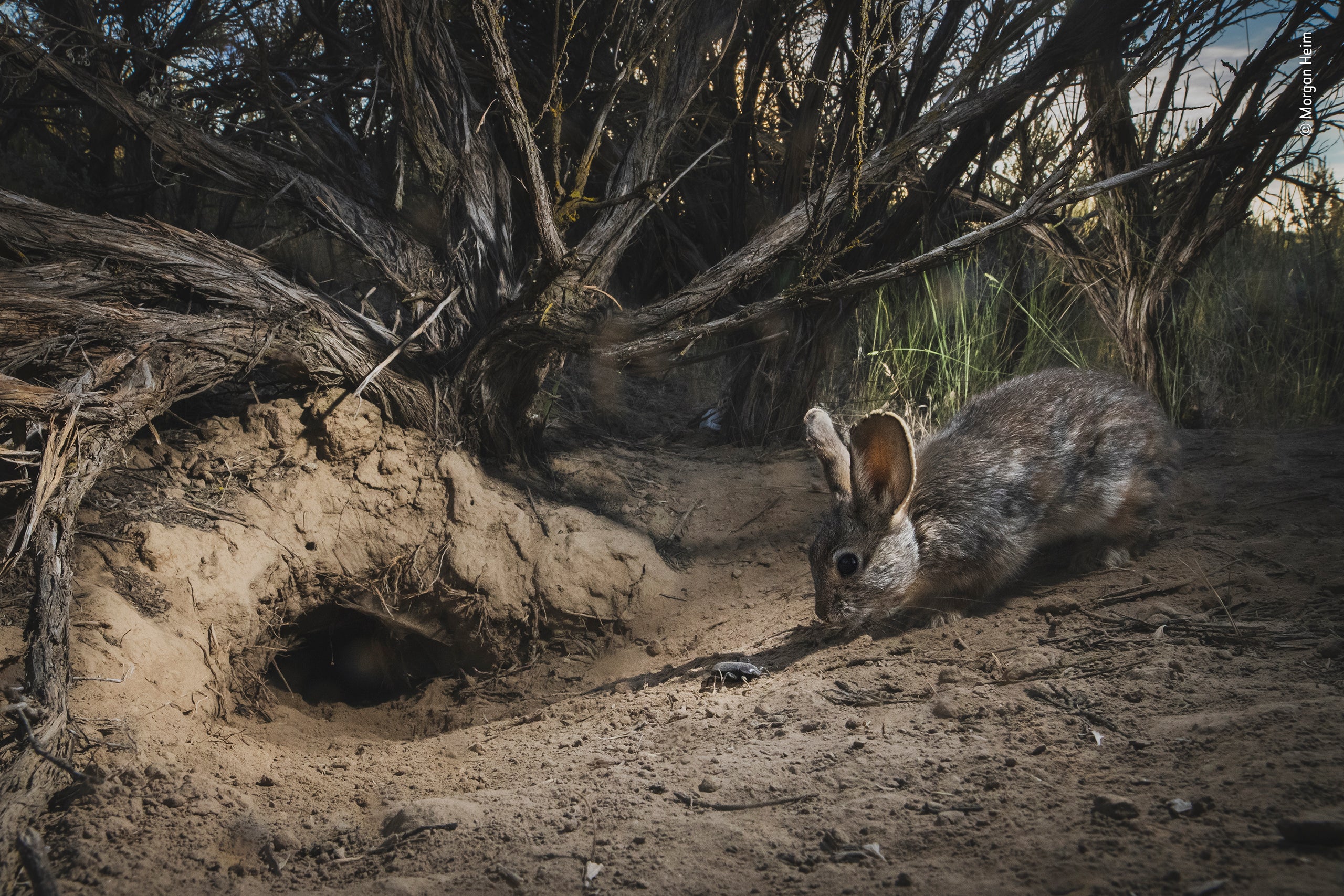
Morgan Heim captured this encounter between a pygmy rabbit and stink beetle near the former’s burrow with the help of camera traps meant to monitor the rabbit population. Natives of the Columbia Basin in Washington State, these rabbits have sadly been driven to near-extinction through the overgrazing and clearing of habitable land in the Basin for growing crops. Conservation efforts have begun to increase their numbers, but more will be needed to ensure that these animals still have a place to call home.
This is a highly commended selection in the “Animals in their Environment” category.
“The Right Look”
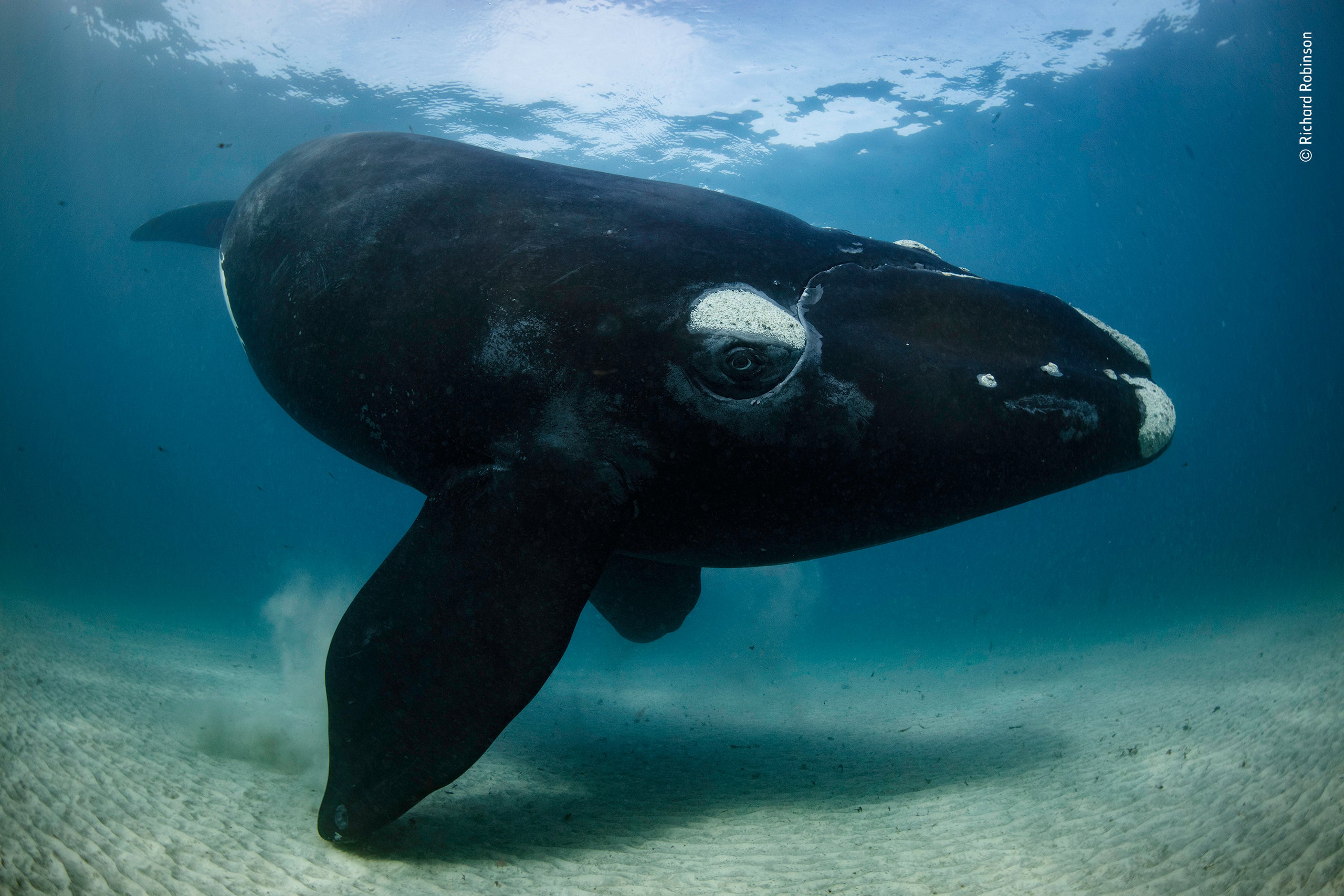
Photographer Richard Robinson had to work hard to snap this shot of a southern right whale calf off Port Ross in New Zealand. The curious whale circled and swam around Robinson for about 30 minutes, but he still had to swim far ahead enough to take the photo.
These whales were once on the brink of extinction thanks to whaling practices through the 19th and early 20th century, and some populations are still endangered, but their numbers have been steadily growing in New Zealand and elsewhere since.
This is a highly commended selection in the “Animal Portraits” category.
